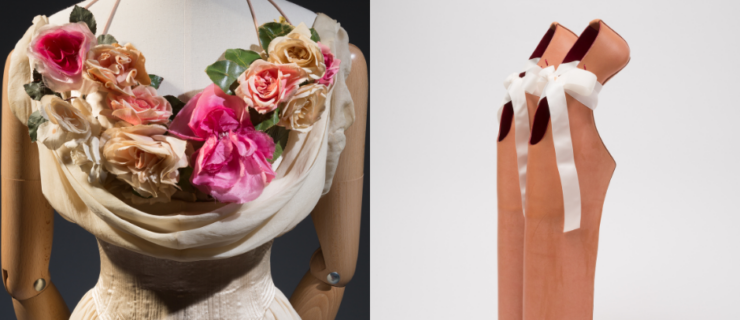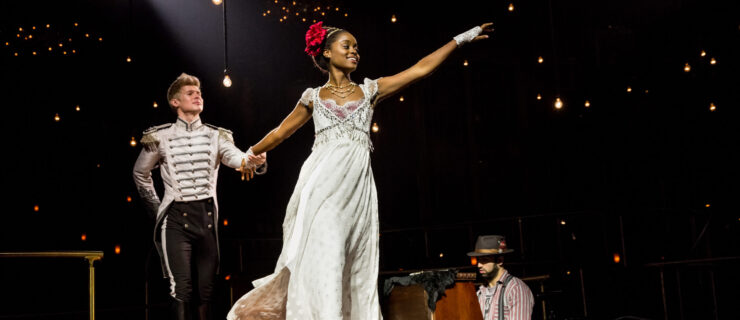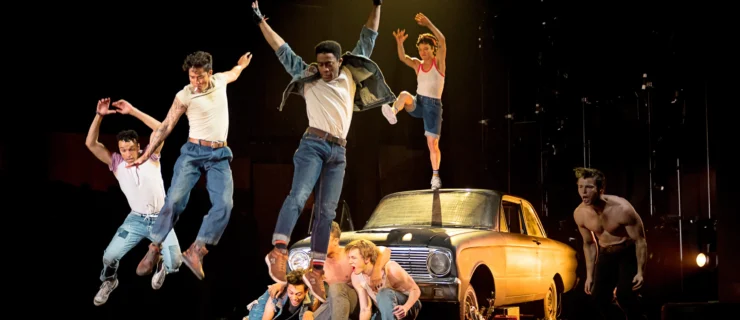Richmond Ballet
Photo by Greg Weiner, courtesy Richmond Ballet
Richmond Ballet
Joyce Theater, New York, NY
April 5–10, 2005
Pittsburgh Ballet Theatre
Joyce Theater, New York, NY
March 29–April 3, 2005
Ballet Internationale
Brooklyn Center for the Performing Arts, Brooklyn, NY
April 3, 2005
Reviewed by Doris Hering
Three middle-sized American ballet companies from three middle-sized cities made New York City debuts within little more than a week.
Richmond Ballet was the only group to present two different programs—six ballets, all commissioned by the company. It even included an evening gala, with Virginia’s governor attending. Directed by Stoner Winslett, it is the smallest (14 members) of the three, but there is stature in its mission (“to awaken and uplift the human spirit both for audiences and dancers” and “to keep meaningful works of dance alive and to produce and foster new works that remain true to these values”). That stature translated directly into the dancers’ performing style: fluid, natural, and confident in their mastery of the classical vocabulary.
The company’s style was deftly used in the first program. The dancers commanded attention even when absolutely still, as when a group perched on a row of bar stools and watched the soloists in William Soleau’s Nuevo Tango. In the same ballet, they communicated even while dancing with their backs to the audience.
Schubert’s Death and the Maiden quartet inspired the restless tension of Jessica Lang’s choreography for A Maiden’s Hymn. The struggle between the young girl and her fate made it seem as though Jenna McClintock, the dying girl, was struggling against a strange electrical current. She had no defense. How vividly McClintock summoned this futile act of courage.
Scottish music sent the dancers in Colin Conner’s Streets and Legends on stormy, serpentine paths that culminated with some of them soaring onto a tall, wooden structure. It was daring, even dangerous, and proved again how meticulously rehearsed this company is and yet how spontaneous its dancers are.
Richmond’s second program proved less impressive. Winslow contributed Echoing Past, danced to the poetic “Das Jahr” of Fanny Mendelssohn-Hensel, exquisitely played by Joanne Kong. Although modest in structure, the ballet’s journey through a woman’s romantic life achieved a certain nobility. In aggressive contrast was Val Caniparoli’s Bow Out, its sexual game-play typified by the women’s donning the men’s jackets. A change in running order, putting Mauricio Wainrot’s Now and Then in the middle, would have strengthened the program. As it was, his bold dirge for Holocaust victims again testified to the emotional range of the dancers.
Pittsburgh Ballet Theatre also stresses a strong, dramatic style, but its dancers lack Richmond’s esprit de corps. Director Terrence S. Orr makes it clear that he believes in “commissioning contemporary ballets and bringing in world-renowned choreographers” for his 25 dancers.
Both dancers and audience were drowned in ambitious choreographic concepts in need of more careful shaping. In Kevin O’Day’s Sting/ING SITUATIONS, the dancers flailed in seven numbers by Sting. For Hungry Heart . . . ‘We all have one,’ Derek Deane set the well-worn cliché of encounters in a bar to music of Bruce Springsteen.
Dwight Rhoden confronts fresh ideas, but structurally he has yet to decide when enough is enough. He set 7th Heaven to a jarring musical zig-zagging of segments of Beethoven’s Symphony No. 7 interlaced with parts of J.S. Bach’s Cello Sonata No. 1 in G Minor. But Rhoden’s muscularly danced mosaic posed a challenge to the dancers, and they met it boldly.
Ballet Internationale’s director, former Kirov artist Eldar Aliev, appears to cling to a dated Russian artistic viewpoint of the late 19th and early 20th centuries. The company’s program began with five chestnuts by Petipa, Asaf Messerer, Nikolai and Serge Legat, Vaganova, and a Corsaire pas de deux by Aliev (after Petipa). The dancers performed them pleasantly, but star turns need stars.
Aliev chose Alberto Alonso’s version of Carmen for his 27 dancers, in which they spend much time menacing and lurking. Karen Scalzitti-Kennedy’s Carmen rarely extended beyond coyness, but this may have been all that was required of her.
Like Alonso, Aliev seems to favor the juicy but exaggerated mimetic tradition of the turn of the century. It’s no longer enough to sustain a meaningful repertoire.
As all three groups testified, a true company identity grows from the brow of the artistic director and adheres to a vision that, while clear and consistent, must be flexible and, of course, interesting. Richmond comes closest.
For more information: www.richmondballet.com; www.pbt.org; www.balletinternationale.org




